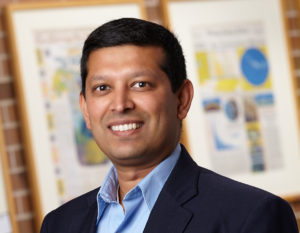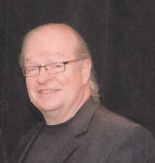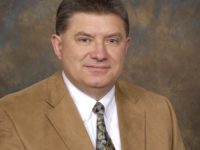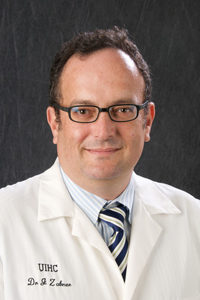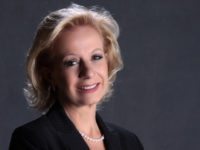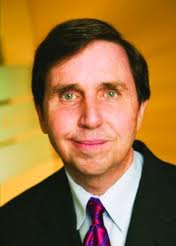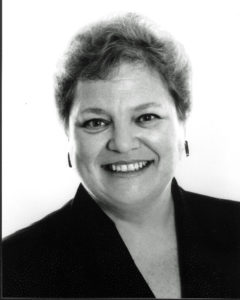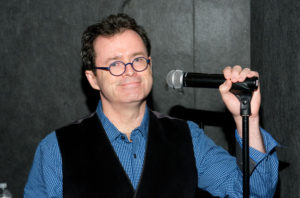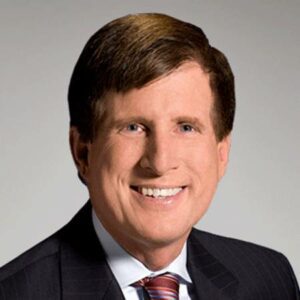Educational Media
- Voice Disorder Reference Guide
- Journal of Voice
- Symposium Videos by Year
- Symposium Sessions by Type
- Lectures – Keynote, G. Paul Moore, Quintana
- Symposium Master Classes
- Stroboscopy Oscars
- Master Class Archives
- Other Lectures and Documentaries
- Voice Disorders Lecture – Dr. Robert Sataloff
- Voice Journey Documentary – Dr. Robert Sataloff
- You’ll Say Nothing – A documentary project on the relationship between trauma and voice. Interviews with TVF luminaries.
- FOX29 A Look Inside Karen Hepp’s Throat
- Historical Lectures
- TVF-NATS Chat/webinars
- Vocapedia – NATS information database for information about singing and the science of voice. Including articles from Journal of Voice
2025 Symposium Tutorials, Lectures, Special Session and Master Class
2025 Symposium Keynote Address: Bharath Chandrasekaren








2017 Tutorials
Tutorials take place on the first day of the Symposium to help prepare attendees for the research papers on subsequent days. They typically include Anatomy and Physiology of the Voice and Production and Perception of the Voice.
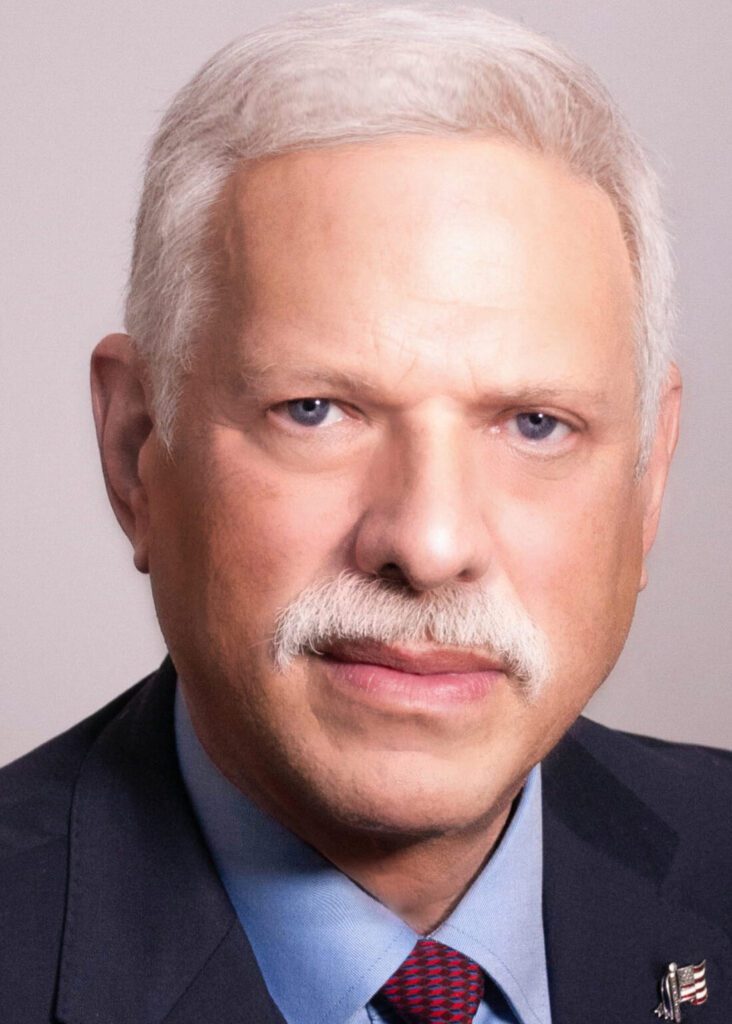
An Overview
Anatomy and Physiology of Phonation
Robert Sataloff, MD, DMA, FACS

Neuro
An Overview (Larson, Sundberg)
Production and Perception of Voice I
Charles Larson, PhD
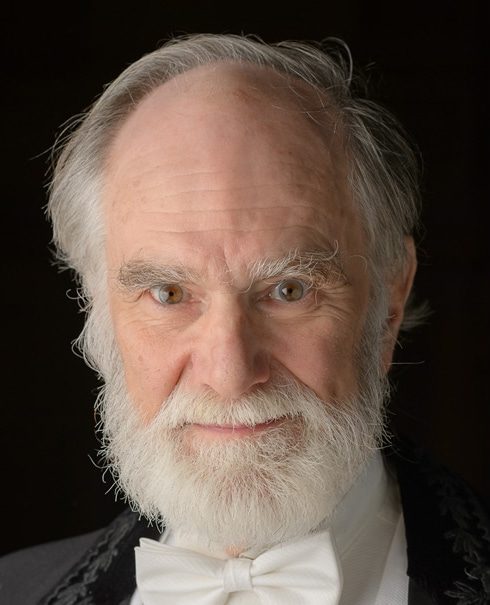
Respiration
Johan Sundberg, PhD
Phonation
An Overview (Scherer, Ternström, Shrivastav, Riley)
Production and Perception of Voice II
Ronald S. Scherer, PhD
Keynote Speech 2017, Robert Zatorre, PhD
Perception , Production and Pleasure: The Neuroscience of Music
G. Paul Moore Lecture: Sten Ternström
Mind the Gap
Quintana Research Award Lecture 2017, Dimitar Deliyski, PhD
for engineering contributions to voice science
An Engineeer in Dysphonialand
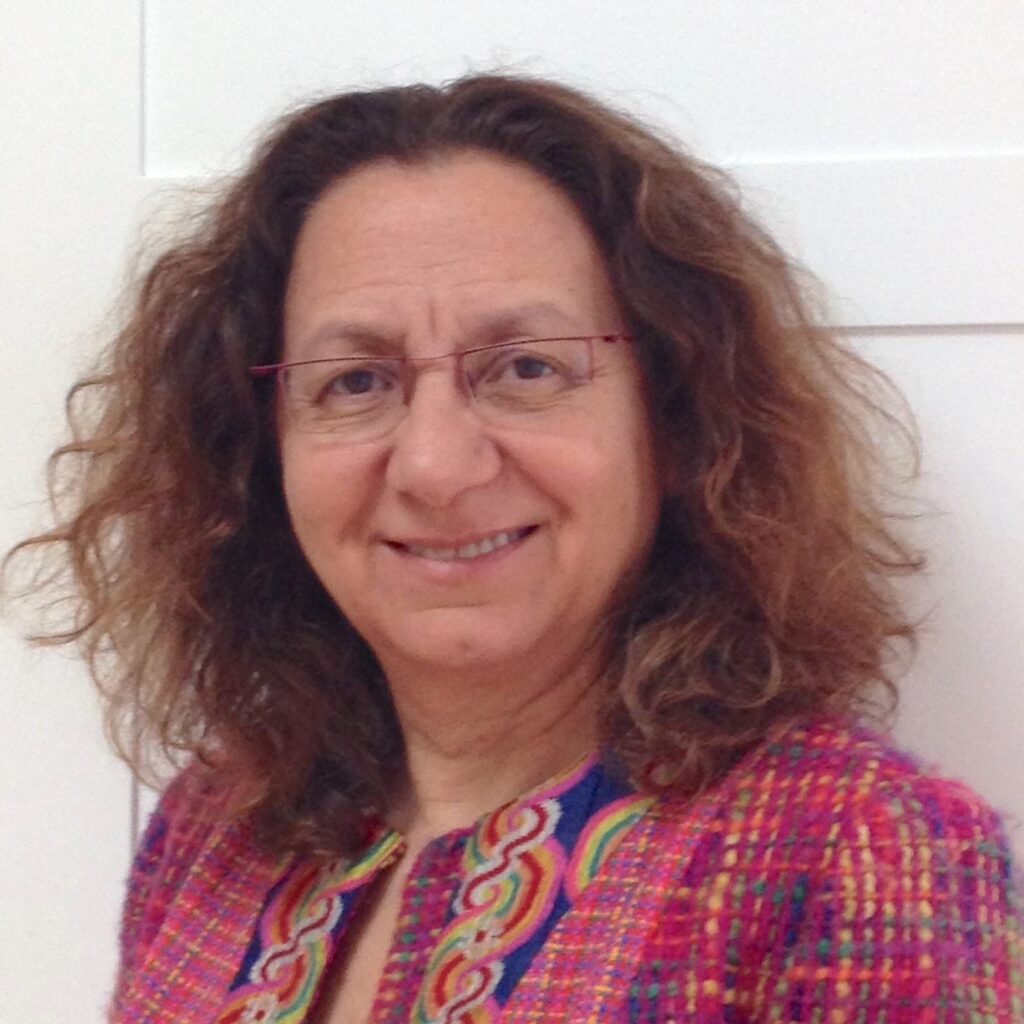
Panel: Lana Shekim, PhD,
Michael M. Johns, MD
NIH Research Training and Research Career Opportunities
Friday Morning Special Session:
PART I: Transgender Voice: Insights and Updates
Nancy Pearl Solomon, Moderator
Care of the Transgender Voice: Historical Context – Nancy Pearl Solomon, PhD
Managing Gender Dysphoria: From Childhood to Old Age – Wylie Hembree, MD
Laryngel Surgery from Male to Female Gender Reassignment – Robert T. Sataloff, MD
Selecting Targets for Transgender Voice and Communication Training – Jennifer Oates, PhD
PART II: Transgender Voice: Insights and Updates
Evaluating Transgender Voice and Communication -Georgia Dacakis, MEd
Current perspectives and future directions for Transgender Voice Care – Adrienne Hancock, PhD
Panel Discussion
45th ANNUAL SYMPOSIUM 2016
2016 Tutorials

Anatomy and Physiology of Phonation –
Robert Sataloff, MD, DMA, FACS
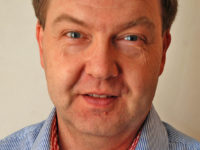
Acoustics
Sten Ternström, PhD
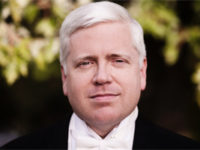
Voice Pedagogy
David Meyer, DM
Keynote Speech 2016, Joseph Zabner, PhD
PART I: Use of Adeno Associated Virus to Express Epithelial Transport Genes in the Vocal Folds
PART II: Use of Adeno Associated Virus to Express Epithelial Transport Genes in the Vocal Folds
Q&A: Use of Adeno Associated Virus to Express Epithelial Transport Genes in the Vocal Folds
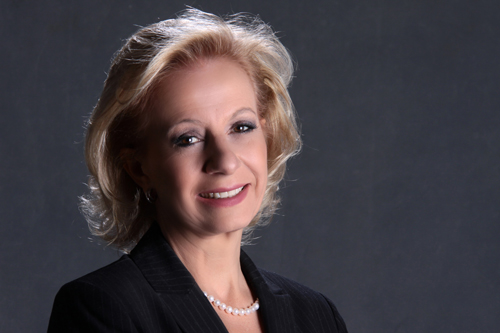
G. Paul Moore Lecture: Mara Behlau, PhD
Lessons in Voice Rehabilitation: Journal of Voice & Clinical Practice

Friday Morning Special Session:
When Exceptional Speaking Skills are Required
Nancy Pearl Solomon: Introduction
Bonnie Raphael:
Part I: Walking the Actor’s Tightrope between Vocal Survival and Extreme Vocal
Demands
When Exceptional Speaking Skills are Required: Panel Discussion
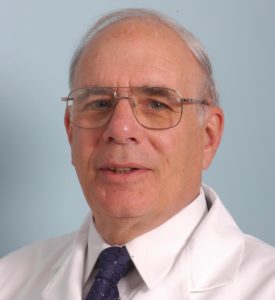
Quintana Award Lecture 2016 – RJ Baken, PhD
Be Prepared
43rd ANNUAL SYMPOSIUM
2014 Tutorials

Anatomy and Physiology of the Voice –
Robert Sataloff, MD, DMA, FACS
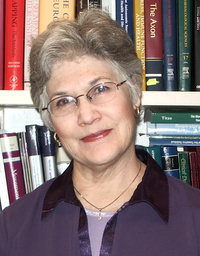
Neural Control of Voice and Disorders –
Christy Ludlow, PhD
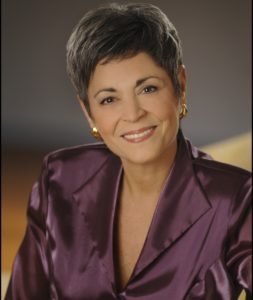
Margaret Baroody, MM Voice Specialist
Injured vs. Healthy Voice Sessions
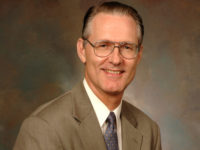
Ron Scherer, PhD
Basic Phonatory Function w/Emphasis on Visual Methodologies –
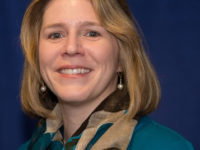
Tanya Edie, PhD
Perception of Voice
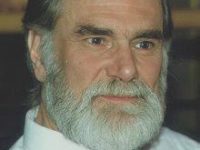
Johan Sundberg, PhD
Voice and Resonance
Panel Q & A – Sataloff, Ludlow, Baroody, Scherer, Edie, Sundberg
40th ANNUAL SYMPOSIUM
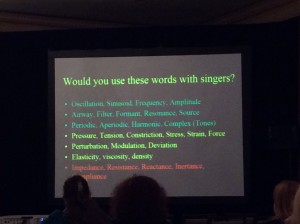 2011 Tutorials
2011 Tutorials
- Resonance and Voice Acoustics – Johan Sundberg, PhD
- All Tutorials – Audio with pictures
Robert Sataloff, MD, DMA, Christy Ludlow, PhD, Ron Scherer, PhD, Johan Sundberg, PhD, Rahul Shrivastav, PhD
Oral Presentations 2011 Follow along in the program
Basic Science Part I
Basic Science Part II, II, Special Session – New Methodologies
Friday Special Session -FROM THE GENOME TO THE GLOBE TRANSCENDING THE BOUNDARIES OF MUSIC AND MEDICINE
VOICE DISORDERS
Voice Disorders, Part 1 – Robert Sataloff, MD, DMA, FACS
Voice Disorders, Part 2 -Robert Sataloff, MD, DMA, FACS
If you encounter problems playing the lectures, please download the latest free version of Macromedia Flash player. For each video, you will not be able to load the end of the lecture exam. Please give the lectures time to load.
Interviews:
Voice Journey Documentary
is a 27-minute award-winning documentary by Zhenya Kiperman about two singers with voice-threatening illnesses. As patients, both had to abandon singing to go through surgeries, periods of complete silence and extensive therapy to finding their voices again.
The film was produced and directed by an award-winning filmmaker and Drexel University film professor Zhenya Kiperman. It features the work of a noted otolaryngologist Dr. Robert Sataloff and combines detailed visual accounts of surgical procedures, including a specially created thyroplasty animation, with a moving narrative of patients’ experiences with their illnesses.
The Modern Vocalist World interviews Dr. Robert Sataloff, Chairman of The Voice Foundation
Historical Lectures
- Larynx Print: Looking into the Voice – Jean Abitbol, M.D.
- The Larynx and Voice: The Function of the Normal Larynx – Hans von Leden, M.D. and G. Paul Moore, M.D.
- The Larynx and Voice: The Function of the Pathologic Larynx – Hans von Leden, M.D., G. Paul Moore, M.D.
- The Larynx and Voice: The Function of theLarynx under Daily Stress– Hans von Leden, M.D., G. Paul Moore, M.D.
- Microsurgery of the Larynx – Minoru Hirano, M.D.
- Phonosurgery Lecture Number 1: Thyroplasty I and III (and Arytenoid Adduction) – Nobuhiko Isshiki, M.D.
- Phonosurgery Lecture Number 2: Miscellaenous Problems and Research Potentials – Nobuhiko Isshiki, M.D.
- The Voice of the Impersonator- Robert J. Feder, M.D., F.A.C.S.
- The Value of Laryngostroboscopy in the Management of Voice Disorders – Murray D. Morrison, M.D.
- Vocal Cord Vibration– Minoru Hirano, M.D.
- Vocal Waves – Jean Abitbol, M.D.
- Voice Therapy for Contact Granuloma – Carole Bloch, M.A.
Back to the Top
________________________________________________________
LARYNX PRINT: LOOKING INTO THE VOICE – Jean Abitbol, M.D.
Translated from French into English, a short introduction gives a history of laryngology and the anatomy and function of the phonatory structures. The non-scientific viewer will enjoy the music and the sequences of a variety of larynges involved in many normal and abnormal speaking and singing samples. The scientific observer will additionally enjoy the translations from French medical terminology into English.
Color and Sound (1983), approximately 30 minutes
________________________________________________________
THE LARYNX AND VOICE: THE FUNCTION OF THE NORMAL LARYNX – Hans von Leden, M.D. and G. Paul Moore, M.D.
Classic, historical video demonstrating the anatomy and physiology of the voice and the mechanics of the vocal folds.
Color and Sound (1957), approximately 21 minutes
________________________________________________________
THE LARYNX AND VOICE: THE FUNCTION OF THE PATHOLOGIC LARYNX – Hans von Leden, M.D. and G. Paul Moore, M.D.
A staged, vintage visit to the laryngologist, complete with high-speed laryngeal videos of the pathologic larynx.
Color and Sound (1957), approximately 24 minutes
________________________________________________________
THE LARYNX AND VOICE: PHYSIOLOGY OF THE LARYNX UNDER DAILY STRESS – Hans von Leden, M.D. and G. Paul Moore, M.D.
Historical high-speed laryngeal videos of the vocal folds during singing, laughing, coughing, talking, and vocal fry.
________________________________________________________
MICROSURGERY OF THE LARYNX – Minoru Hirano, M.D. This tape shows Dr. Hirano’s microlaryngeal surgical techniques for several procedures: removal of a nodule, cyst, and a polyp; laser excision of granuloma, a ventricular cyst, and epithelial dysplasia; laser cordectomy of glottic carcinoma; and laser correction of a subglottal stenosis using an endolaryngeal approach.
Color and Sound (1982), approximately 16 minutes
________________________________________________________
PHONOSURGERY LECTURE NUMBER 1: THYROPLASTY I and III (and ARYTENOID ADDUCTION) – Nobuhiko Isshiki, M.D.
The four types of thyroplasty procedures are classified and the advantages of laryngeal framework surgery are given. An in-depth discussion of the thyroplasty I (vocal fold medialization) procedure used to correct imperfect glottic closure is given. A description is given of a combined operation of thyroplasty type I and thyroplasty type III used to correct vocal fold atrophy and sulcus. Videotaped highlights of the thyroplasty procedure are presented along with pre- and postoperative stroboscopic images of the patients. The arytenoid adduction procedure is discussed as is the combining of arytenoid adduction with thyroplasty type I to correct a large glottal chink. The vidoetape concludes with a short question-and-answer session.
Color and Sound (1993), aprroximately 93 minutes
________________________________________________________
PHONOSURGERY LECTURE NUMBER 2: MISCELLANEOUS PROBLEMS AND RESEARCH POTENTIALS – Nobuhiko Isshiki, M.D.
The effectiveness of the Silastic implants used in thyroplasty procedures is discussed. The focus is on pitch problems and how dysphonia develops. Highlights include the following surgical procedures: lowering vocal pitch, cricothyroid approximation, combined thyroplasty to correct an unusual functional-related dysphonia, thyroplasty type I for correction of spastic dysphonia, laryngeal web removal and mucosal transplantation. Concludes with a discussion of the acoustical analysis of the voice and applications for determining the ease of phonation, along with the importance of animal experimentation.
Color and Sound (1993), approximately 91 minutes
________________________________________________________
THE VOICE OF THE IMPERSONATOR – Robert J. Feder, M.D., F.A.C.S.
Impersonators Mel Blanc and Rich Little and ventriloquist Willie Tyler demonstrate their various characterizations and their normal voices. The patterns of vocal fold motion and the associated dramatic changes that occur in the supraglottic vocal tract are observed using flexible fiberoptic laryngoscopy.
________________________________________________________
THE VALUE OF LARYNGOSTROBOSCOPY IN THE MANAGEMENT OF VOICE DISORDERS – Murray D. Morrison, M.D.
Gives examples of male and female laryngeal images under normal and stroboscopic light. Pathologies illustrated include nodules, edema, fibrosis, polypoid thickening, contact granuloma, diplophonia, vocal fold scarring secondary to vocal fold “stripping,” vocal fold carcinoma, and glottic web.
Color and Sound (1983), approximately 13 minutes
________________________________________________________
VOCAL CORD VIBRATION – Minoru Hirano, M.D.
Vocal fold anatomy is illustrated using histological slides and schematic drawings. The mode of vibration is demonstrated using simplified schematic drawings. High-speed photography illustrates the vocal fold vibration of several male and female subjects with normal and abnormal larynges, then the vibration is simulated in schematic drawings.
________________________________________________________
VOCAL WAVES – Jean Abitbol, M.D.
________________________________________________________
VOICE THERAPY FOR CONTACT GRANULOMA – Carole Bloch, M.A.
A group of six professional men who are currently undergoing treatment for contact granuloma discuss their experiences with surgical, medical, and therapeutic treatment regimens. This video illustrates the value of voice therapy as a primary mode of treatment for this disorder
________________________________________________________
